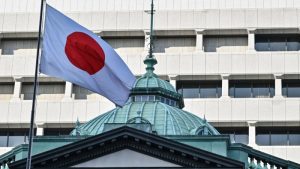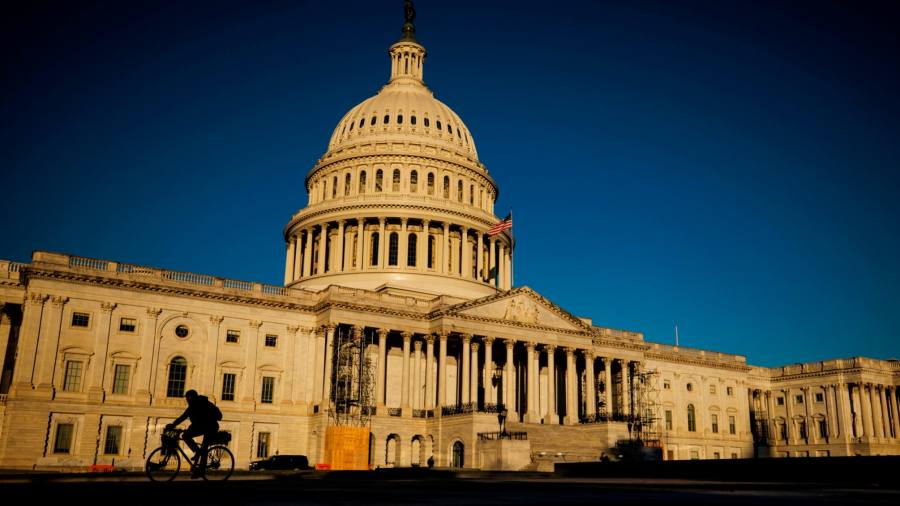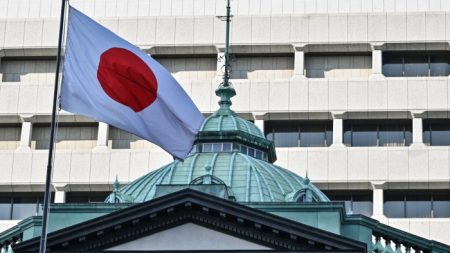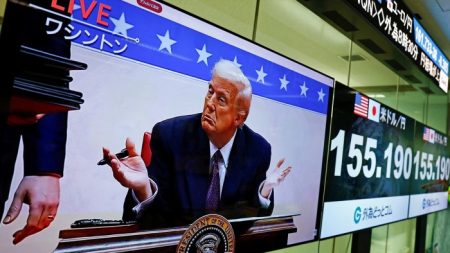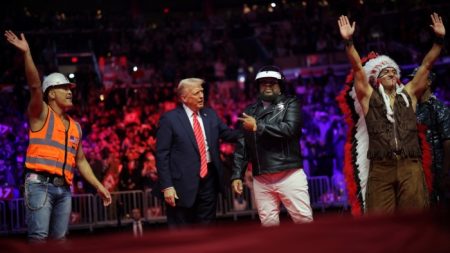The cost of buying insurance against a US government default has shot to its highest level in more than a decade, in an early sign of market concerns about the political impasse in Washington over the debt ceiling.
Amid a stalemate between the White House and congressional Republicans on raising the federal borrowing limit, the price of five-year credit default swaps — the most widely traded form of debt insurance — reached its highest since 2012 this month.
A default on US federal debt — an outcome US Treasury secretary Janet Yellen has warned would lead to “catastrophe” — is still viewed as unlikely.
But investors are moving to protect themselves against the possibility, which could theoretically come as soon as June, or to profit from a protracted game of chicken that upends markets.
“It seems like you are starting to see the beginnings of concern about a default happening,” said Jay Barry, co-head of interest rate strategy at JPMorgan. “We think this is going to be a pretty protracted debt ceiling fight.”
While the new Republican leadership of the House of Representatives is demanding deep federal budget cuts in exchange for lifting the debt ceiling, the administration says it will not negotiate.
Kevin McCarthy, the Republican House Speaker, told Joe Biden in an open letter last month he was “incredibly concerned” the US president was “putting an already fragile economy in jeopardy by insisting upon [an] extreme position on the debt limit”.
In a report this week, the IMF warned that uncertainty surrounding a debt ceiling resolution was “adding to risks and volatility in short-term US funding markets”.
Wall Street is braced for the most contentious tussle since at least 2011, when a stand-off over the debt ceiling led to the US losing its top-notch triple A credit rating.
At 46 basis points, the price of five-year credit default swaps remains well below levels hit during the 2008-09 financial crisis, but the bond market has also indicated nerves about the possible default date.
Demand was unusually weak at the three-month Treasury bill auction on Monday. The price of Treasury debt that comes due in late July and early August — close to a theoretical default date — has now fallen below those on other short-term debt, an indicator that investors see such dates as particularly risky.
Republican House leaders are now drawing up a “term sheet” of conditions they say Democrats must first agree to before any increase in the debt ceiling, but Biden has called on them to pass a “clean” bill without preconditions.
Some of the most hawkish House members have suggested breaching the debt ceiling without a deal would not represent a major problem.
“I’m not afraid of that, quite frankly,” said Republican Bob Good this month.
But leading policymakers have underscored the immense consequences of a US default for the global economy and financial system.
“There’s only one way forward here, and that is for Congress to raise the debt ceiling so that the United States government can pay all of its obligations when due,” Jay Powell, Federal Reserve chair, said in February. “Any deviations from that path would be highly risky.”
Concerns about the stand-off have ratcheted up as the US approaches its annual tax deadline on April 18, because incoming tax receipts will determine how far away the possible default date is.
Yellen has said the government is “unlikely” to run out of cash before “early June”, but estimates vary widely on when the US would actually confront an outright default, with many experts suggesting it could come in late July or August.
Congress has had frequent high-stakes confrontations over the debt limit in recent years without sparking a default on government debt. The debt ceiling was last raised in December 2021, when Republican Senate minority leader Mitch McConnell capitulated to Democratic demands.
Read the full article here



